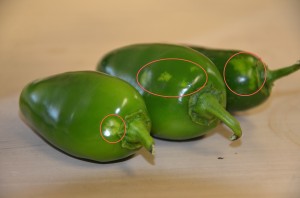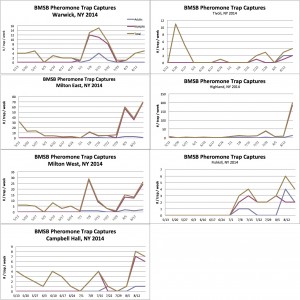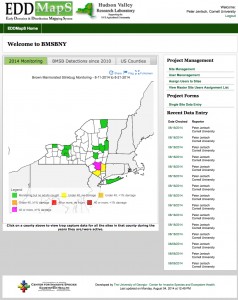Damage from the the Brown Marmorated Stink Bug (BMSB) began to appear this week on apple, peach and pepper.
A dramatic increase was observed last week of late instar BMSB nymph movement to pheromone baited Tedders traps at two of our monitored sites, Milton-East and Highland. We found one site with feeding injury to peach and a second site with damage to Jalapeno pepper. The pepper damage represented 2% injury from 4 pepper from a box of 200 fruit. The block was scouted over the past three weeks with no sign of BMSB in the field, yet, there’s the injury from the past 10 days (Image above).

A Marlboro fruit grower had 6 Ginger Gold fruit from their packing line with BMSB injury. Fruit had a definitive feeding tube. The site had been monitored using traps with no BMSB trap captures.
When BMSB fruit injury is observed intensive scouting should be conducted. If BMSB is observed applications for management of BMSB should be made at the first available window using one of the most effective insecticides that will best fit your harvest schedule.
The list of the most effective insecticides for BMSB management is found using this link. NYS labeled insecticides effective for use against the BMSB are available in four major classes including pre-mix formulations. Bifenthrin received an emergency exemption use permit (Section 18) to control brown marmorated stink bug (BMSB) on apples, peaches, and nectarines in Orange, Dutchess and Ulster Counties of NY. Products include Bifenthure and Brigade, showing the greatest degree of efficacy of the pyrethroid group. However, bifenthrin has a 30d re-application interval, a 14d PHI and 12h REI.


